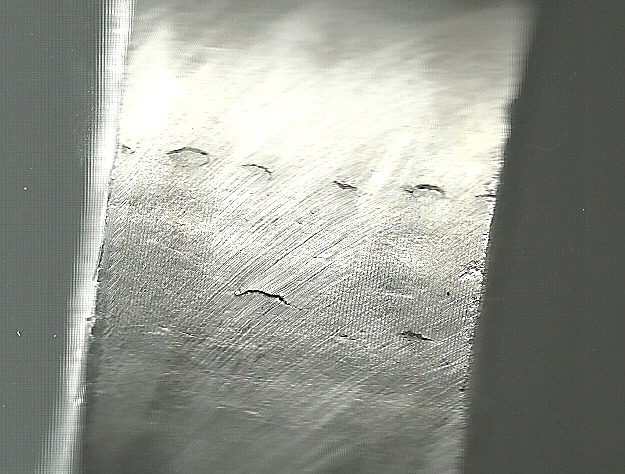There is no need to run pulse on anything but aluminum that is less than 1/8 inch thick regardless of the position. The thermal conductivity of aluminum requires heat, the more the better (to a point). I've qualified welding procedures and welders on 1/8 inch thick 6061-T6 with standard spray mode transfer without backing. I wouldn't want to weld anything less than 1/8 inch without backing with spray mode, perhaps that is where the pulse spray transfer would show some advantage.
Looking back at the photograph, I am still of the mind that it is related to oxides. If not oxides, then perhaps liquation cracking. Without access to my references to see what the liquidus-solidus temperature spread is for the filler metal, it hard to say the words liquation cracking. The wider the range of L-S the more likely LC is the culprit. Then there is the issue of dilution and groove details; narrow groove, more dilution, possibly wider L-S, higher potential for LC. Sometimes the remaining liquid will back fill the LC, but they serve as crack initiators when you perform the bend test, similar to oxide inclusions.
Best regards - Al

